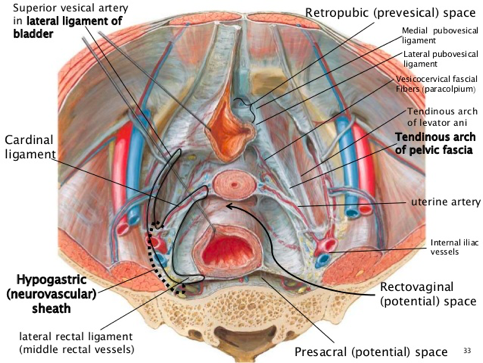Back
Pelvic Floor Dysfunction and Fascia
By Shannon Strauch, PTA, STMT-1 on 9/17/2024

Pelvic floor dysfunction (PFD) can manifest in a variety of ways, from urinary incontinence to chronic pelvic pain. While pelvic floor therapy is a well-known treatment, a lesser-known yet highly effective approach is
fascial counterstrain
(FCS). This gentle, non-invasive technique targets the fascia, a connective tissue that envelops muscles, organs, and nerves, to release tension and restore normal function. In this blog, we’ll explore how fascial counterstrain works and how it can help treat pelvic floor dysfunction.What Is Fascial Counterstrain?
Fascial counterstrain is a manual therapy technique designed to release tension in the fascial system. Fascia is a web of connective tissue that surrounds muscles, nerves, blood vessels, and organs. When fascia becomes tight or restricted due to injury, stress, or trauma, it can lead to pain and dysfunction in the body—including the pelvic floor. Fascial counterstrain works by applying gentle, precise pressure to specific points in the body to relieve this tension and restore normal function.How Does Fascial Counterstrain Help Pelvic Floor Dysfunction?
Releasing Fascial Tension:
One of the key ways fascial counterstrain helps with pelvic floor dysfunction is by releasing tension in the fascia surrounding the pelvic organs and muscles. Restrictions in the fascia can cause pelvic floor muscles to become tight or overactive, leading to pain, difficulty with bladder or bowel control, and sexual dysfunction. By gently releasing these restrictions, fascial counterstrain allows the pelvic floor muscles to relax and function properly.Improving Circulation and Nerve Function:
Fascial restrictions can also compress blood vessels and nerves in the pelvic region, leading to poor circulation and nerve irritation. This can contribute to issues such as pelvic pain, urinary urgency, and bowel dysfunction. Fascial counterstrain helps improve blood flow and reduce nerve compression by freeing up the fascia, which allows for better circulation and nerve signaling in the pelvic floor area.Addressing Chronic Pain:
Chronic pelvic pain is often linked to fascial restrictions, which can create a cycle of tension and discomfort. The body may react to this pain by tightening the pelvic floor muscles further, worsening the dysfunction. Fascial counterstrain breaks this cycle by directly addressing the fascial restrictions causing the pain. By reducing tension in the fascial system, the technique helps decrease pain and restore mobility in the pelvic region.Restoring Muscle Coordination:
Pelvic floor dysfunction is often associated with poor coordination between the pelvic floor muscles and the rest of the core. Fascial counterstrain helps by releasing restrictions not only in the pelvic fascia but also in related areas, such as the hips, lower back, and abdomen. This improves overall muscle coordination, allowing the pelvic floor to work more effectively with the surrounding muscles, which can improve bladder and bowel control, reduce discomfort, and restore balance.
Conditions Fascial Counterstrain Can Help With:
Fascial counterstrain is effective in treating various types of pelvic floor dysfunction, including:Urinary incontinence
(both stress and urge incontinence)
Chronic pelvic pain
Pain during intercourse
Constipation and bowel dysfunction
Prolapse symptoms
Post-surgical pain or dysfunction
The Benefits of Fascial Counterstrain for Pelvic Floor Dysfunction:
Non-invasive and gentle
: Unlike more aggressive manual therapies, fascial counterstrain is a gentle, pain-free technique that works with the body’s natural healing processes.
Long-lasting results
: By addressing the root cause of dysfunction—fascial restrictions—this therapy often provides long-lasting relief from pelvic floor issues.
Holistic approach
: Fascial counterstrain considers the body as a whole, treating not just the pelvic floor, but any interconnected areas that may contribute to dysfunction.
Conclusion:
Fascial counterstrain offers a unique and effective way to treat pelvic floor dysfunction by targeting the fascia, relieving tension, improving circulation, and restoring normal muscle function. If you’re dealing with symptoms like pelvic pain, incontinence, or bowel issues, this gentle therapy could be the solution you’ve been searching for. Working alongside pelvic floor therapy, fascial counterstrain can help you regain control and comfort.Call to Action:
If you’re struggling with pelvic floor dysfunction, consult with a specialist trained in fascial counterstrain to explore how this technique could benefit you. Early intervention can make a significant difference in your recovery and overall quality of life. Reach out to us at Pelvic Health Center in Madison, NJ to set up an evaluation and treatment! Feel free to call us at 908-443-9880 or email us at receptionmadison@pelvichealthnj.com.Read More:
How Chronic Pelvic Congestion in Men Contributes to Prostatitis By Shannon Strauch, PTA, STMT-1 on 12/11/2024 How lymphatic issues can cause symptoms of prostatitis Prostatitis and Tight Pelvic Floor Muscles: A Comprehensive Guide By Shannon Strauch, PTA, STMT-1 on 12/10/2024 How a tight pelvic floor can be the reason for prostatitis symptoms
Are you ready to live pain free?
Request An Appointment